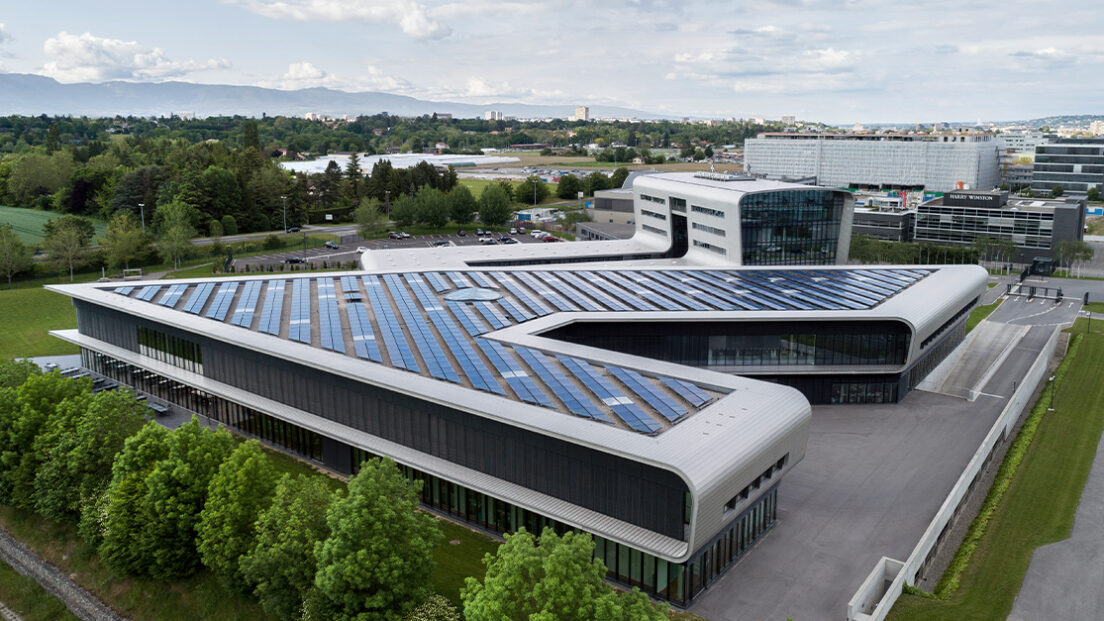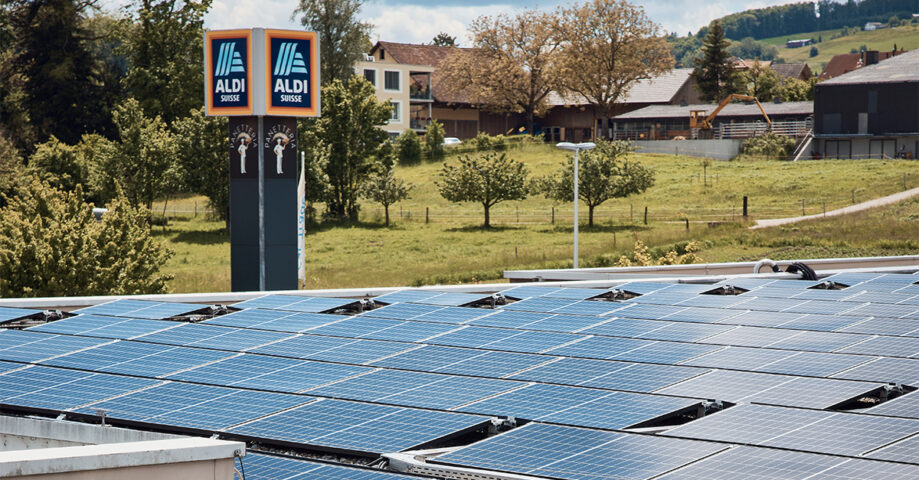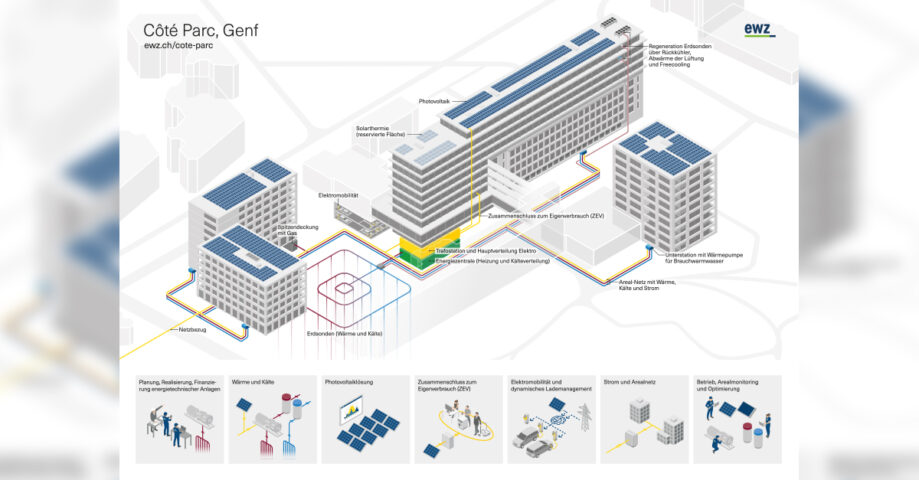Photovoltaics: Economic and ecological benefits for real estate owners

The system integration of photovoltaic systems with heat pumps, chillers and charging stations for electric cars creates synergies that have a positive effect on the profitability of solar solutions. A decentralized energy supply with solar power also offers property owners a new business model: high self-consumption increases the yield of solar systems. At the same time, the residential parties benefit from inexpensive, locally produced solar power.
Enormous solar potential
After a steady increase over the years, photovoltaics recorded a record increase in 2020. According to the “Solar energy statistics” of the Federal Office of Energy (SFOE), around 118,000 photovoltaic systems with an output of almost 3 gigawatts were installed at the end of 2020. The strong market growth continued in 2021, so that according to Swissolar, photovoltaics (PV) today covers more than 6 percent of Switzerland’s electricity requirements. Experts assume that this trend will continue, not least in view of the efforts towards much more energy independence.
Ecological and economic advantages
Photovoltaic systems bring a whole range of advantages for owners of real estate portfolios. On the one hand, they can protect themselves against rising electricity prices. On the other hand, they already meet possible future self-production specifications today. Also with regard to subsidies, new rules will make the production of solar power more attractive in the future. In addition, portfolio owners with their own solar systems benefit from a clear reputation advantage.
In most cases, PV power from your own roof is cheaper than power from the grid. The fact that power consumption due to heat pumps and electromobility will continue to rise in the future contributes to the financial attractiveness of PV systems. Improving the ecological balance sheet is also becoming increasingly important, because sustainability aspects are part of the strategy of more and more companies. Furthermore, PV systems are also interesting because they increase the value of real estate. If the photovoltaic systems produce more electricity than can be consumed on site, it is possible to use the solar power in other properties.

In the ALDI SUISSE solar project , for example, sustainability and cost-effectiveness play a key role. In just over a year, ewz equipped 68 store roofs between Romanshorn and Geneva with photovoltaic systems. ALDI SUISSE uses most of the solar power itself for its own branch operations. Thanks to the large PV systems, the implemented solution enables a high solar yield with an average self-consumption of 55 to 60 percent.
High self-consumption increases profitability
There is already a heat pump in around 90 percent of new buildings, and new registrations of electric cars are continuing to rise sharply. However, heat pumps and electric vehicles are only really low in CO 2 if they use renewable electricity. The combination with a photovoltaic system therefore makes sense: Solar power reduces CO 2 emissions and high self-consumption increases the profitability of the PV system. This is because the production costs for solar power are lower than the electricity tariff for households and because the energy suppliers pay a low tariff for the solar power fed into the grid.
A good way of using a large part of the solar power yourself is to organize several end users in a group for self-consumption (ZEV) . These are possible both in rental properties and among property owners. The degree of self-consumption of photovoltaic systems is on average 30 to 40 percent. This value can be significantly increased with self-consumption solutions.
A large part of the electricity is used on site through the targeted control of consumers such as heat pumps or electric vehicles. The advantage for property owners and their tenants: the cost of solar power, at 8 to 16 centimes per kilowatt hour, is lower than the electricity tariff for households, which costs 15 to 25 centimes per kilowatt hour.
An interesting practical example of this is the “ Côté Parc ” project in Geneva. 776 photovoltaic panels on the roofs of the area form the basis for an integrated solar solution with heat pumps, charging stations for electric cars and the area’s own power grid, including self-consumption for the users.

For real estate owners with large roof areas (from approx. 700 m2), a contracting model is an option worth considering. The provider takes over all services – from planning to financing, implementation to operation over several decades. Including the integration of photovoltaic systems in a holistic energy solution with heat and cold supply, electromobility and self-consumption models.
Business customers of ewz can rely on efficient and tailor-made solutions from competent teams with many years of experience. Investment, maintenance and repair costs are not incurred during the contract period. After the end of the contract period – usually 20 to 30 years – the photovoltaic system becomes the property of the customer.
Further interesting information on the subject of photovoltaics and the white paper “Photovoltaics & ZEV” can be found here .
ewz energy solutions
Locations in Zurich, Sils (GR) and Rolle (VD)
ewz.ch/energy-solutions